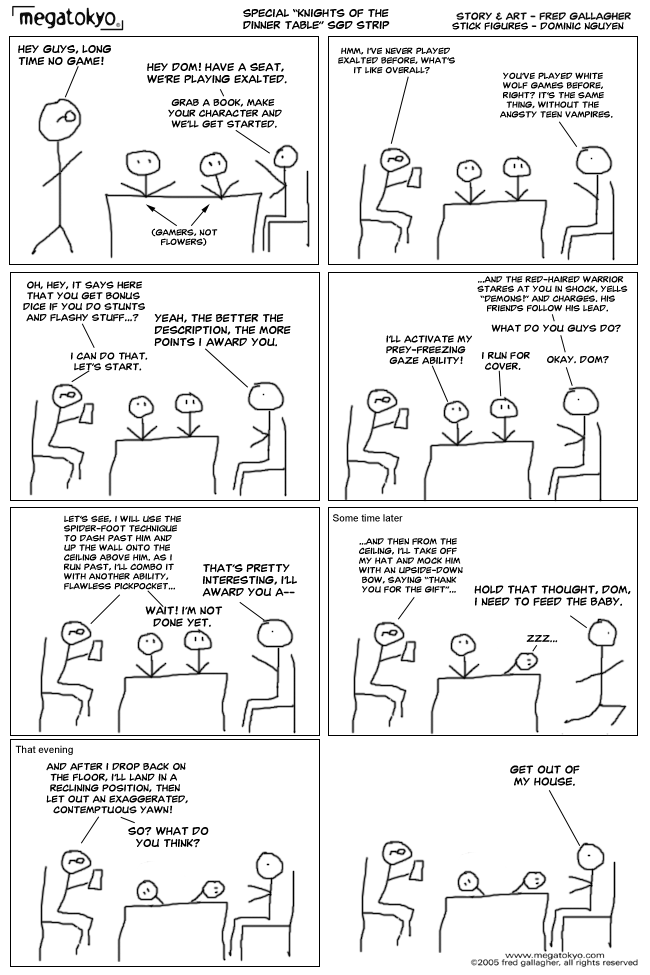Combat Advantage
I'm thinking of doing something that the authors were going to put into the game but either ran out of space or decided against.
We'll call this "Combat Advantage" for now.
How it works is this:
1. The GM listens to the player's description of how he's using his weapon for his attacks and parries and during his dodges. If his use is reasonable, then the combat continues as normal.
2. The GM is listening for an advantaged/disadvantaged situation in the description of combat. For example, a character may use his broadsword to parry the incoming blow and then, the player describes how the character flips his wrist to alter which side his blade leans, blocking to the left,then flipping and coming in on the target's torso with a slice from the right. The broadsword is an edged weapon, and the movement the character made is reasonable, so this attack goes without an advantaged or disadvantaged situation.
But, let's say an opponent comes in on the character with a spear, low to the character's left hip. The character is right handed, and he describes his parry has taking his broadsword and coming down hard on the haft of the spear, knocking it down and away.
Now, given the position of the character with his right arm across his body and the blade pointing past his left leg, he's in no position to recover quickly and make a strike. This the GM recognizes as a disadvantaged positon. So, the GM slaps a -2 penalty on the character's next attack.
For a third example, consider the attacker with a spear doing the exact same thing. He comes in low, jabbing at the character's waist. The player describes his character dodging this time. He says his toon takes a step to the right, avoiding the spear. Now, the GM sees that the character is in an advantaged position. He's slightly to the opponent's left, and the opponent is hunched, with both hands on the spear. The opponent has his entire left side exposed, and the attacking character is right handed. He can swing is broadsword with a chop coming in from the back to the opponent's mid-section, or he can just use the point of his broadsword to stick in his opponent's ribs.
Since the character is in a good position (and hopefully takes advantage of the position with his description of his attack), the GM rules that the character is, in deed, advantaged, and gives him a +2 bonus to hit.
Using this Advantaged Combat System, all that's happening is that the GM is listening to the player's immersive description of his attack and defense movements and deciding when the character is advantaged and disadvantaged. He considers the type of weapon and how it is best used (piercing, slashing, or blunt chopping attacks). Then the GM simply awards a +2, -2, or no modifier at all, depending on what he thinks is appropriate.
I sure would have liked to have seen how the authors of the rulebook implemented this type of rule, but from what I read, it was close to what I have here.

